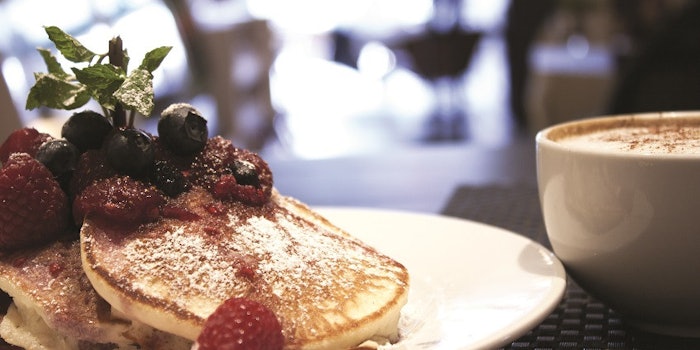
One of the biggest changes in practical terms for flavorists over the past few decades has been the sheer pace of work. We all work on vastly more projects and simultaneously have much tighter deadlines. This, for me at least, further drives a strong preference I have always had for blotters over tasters. For speed, especially quick comparisons, blotters cannot be beaten. The danger is the tempting pitfall of paying much more attention to odor than to taste.
Lauric acid (dodecanoic acid) (FEMA# 2614, CAS# 143-07-7) has a mild odor that is somewhat cheesy and definitely soapy; on the face of it is not very interesting outside a few flavor profiles. The nondescript odor is more than compensated for by a very interesting, long lasting, taste effect. The taste effect is most obviously associated with the lingering, slightly dry, aftertaste of authentic dairy flavors. I am certain that the vast majority of lauric acid used by the flavor industry goes into the dairy category. I think it is worthwhile extending this taste effect to a much wider range of flavors.
Note that the dose rates given throughout this article are the levels suggested for use in flavors intended to be dosed at 0.05% in ready-to-drink beverages or in a simple bouillon.
Dairy Flavors
Butter: Butter flavors can contain vastly different amounts of lauric acid, depending on the profile required. A reasonable compromise is 5,000 ppm, but the best effect could be at a level several times higher or lower.
Buttermilk: Unsurprisingly, this ingredient is also very important in buttermilk flavors. The ideal level again varies but is a little lower, around 3,000 ppm.
Cheese: The best level for cheese flavors is even harder to agree with any certainty. A decent starting is 1,000 ppm and should work well in milder cheddar profiles. More pungent and more aged cheese profiles are a different story, especially parmesan, where the 1,000 ppm level can be multiplied by ten to good effect.
Cream: Rather less lauric acid, around 500 ppm, is a good level for cream flavors, which adds a subtle taste effect.
Milk: Fresh milk flavors accommodate similar levels, but a nice effect can be achieved by pushing the level up a little to around 1,000 ppm. This effect is even more important in condensed milk and dulce de leche flavors. A good starting point in this category is 1,000 ppm, but it can be pushed much higher to get an attractive, if not necessarily authentic profile.
Savory Flavors
Bacon: All savory flavors run the risk of placing too heavy a reliance on the usual suspects, a few very pungent and highly characterizing sulfur compounds. Trying to build complexity, depth and authenticity can be a little challenging. Lactones help without imposing obvious dairy notes and lauric acid also works very well. The ideal level in bacon flavors is 200 ppm.
Beef: The same comments apply equally to beef flavors and the most effective level of addition of lauric acid is normally the same, around 200 ppm. The exception is beef flavors where the cooked or burnt fat note is prominent. This category can make good use of up to 1,000 ppm of lauric acid.
Chicken: Chicken flavors are also similar, but there is not so much variation for different profiles. Across the board, 200 ppm of lauric acid works well.
Mushroom: A good level in mushroom flavors is 200 ppm, which works well in both cooked and raw categories and also in more exotic mushroom types, such as chanterelle.
Fruit Flavors
Blackberry: Taste effects can seem initially to be a little less important for fruit flavors, but the reverse is true. The addition of a small amount, around 400 ppm, of lauric acid to blackberry flavors changes the aroma very little but adds an extra taste dimension that is quite reminiscent of blackberry skin.
Blueberry: The same effect comes into play with blueberry flavors, but the ideal level is a little lower, nearer 200 ppm.
Cherry: Cherry flavors work best with even lower levels of lauric acid. A noticeable difference can be made with 50 ppm.
Mango: Mango flavors, if they are to taste reasonably authentic, should have quite a noticeable skin note. Along with volatiles such as ocimene, lauric acid can help build this skin effect at 500 ppm.
Peach: Peach and apricot flavors also benefit from a subtle skin note and a small addition of lauric acid, in the region of 100 ppm.
Pineapple: Pineapple skin notes are not exactly an attractive concept. Never mind, lauric acid still adds an attractive taste effect at 500 ppm.
Raspberry: Thankfully, raspberry flavors fit perfectly into my skin enhancement theory. The effect is very similar to blackberry flavors, as is the level, around 3,000 ppm.
Fermented Flavors
Cognac: Lauric acid is useful in all fermented flavors, including wine and beer, but it is most helpful in distilled spirit flavors. Cognac and brandy flavors typically need around 300 ppm.
Rum: Most rum flavors, especially white rum flavors, do not really need the addition of lauric acid. A modest addition of 100 ppm can still be helpful in realistic dark rum flavors.
Whisky: Malt whiskies have a powerful, lingering, aftertaste. Lauric acid recreates this character at levels in the region of 1,000 ppm in whisky flavors.
Other Flavors
Caramel: Widely varying levels of lauric acid can be used in caramel flavors, depending on the effect desired. A good starting point is 400 ppm, but levels up to 1,000 ppm also work well.
Chocolate: More modest levels, ranging from 100 ppm in dark chocolate flavors to 200 ppm in milk chocolate flavors, work best.
Coconut: Lauric acid is especially easy to incorporate into coconut flavors. Traditional coconut flavors can accommodate as much as 8,000 ppm, but more subtle coconut water flavors are better served by lower levels, around 2,500 ppm.
Coffee: Only a modest addition of lauric acid is needed in typical coffee flavors. To create a subtle, natural taste effect, 100 ppm works well.
Tea, Black: Lauric acid is much more at home in black tea flavors than in green tea flavors. Levels can be shaded down for more subtle styles, but 500 ppm works well in typically robust breakfast black tea flavors.
Vanilla: This ingredient is most at home in creamy and French-style vanilla flavors, which are helped by additions in the region of 500 ppm.











